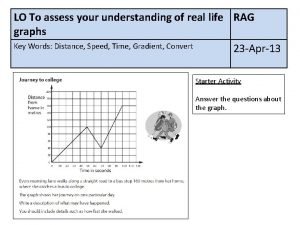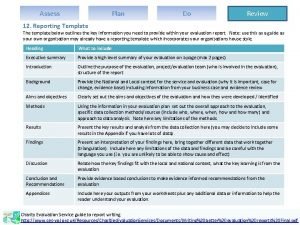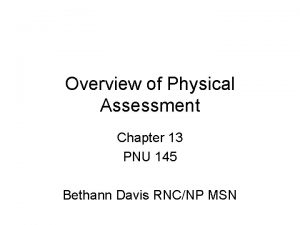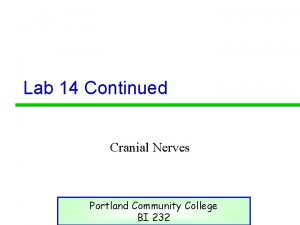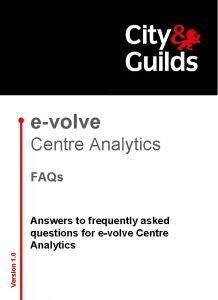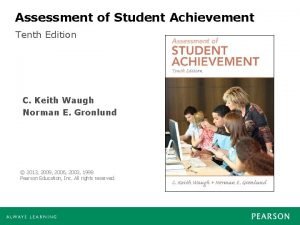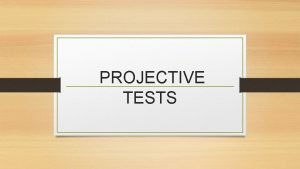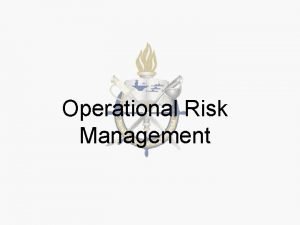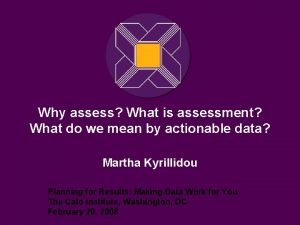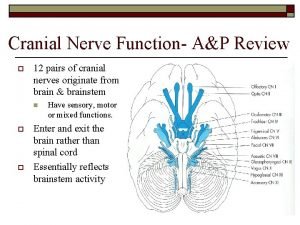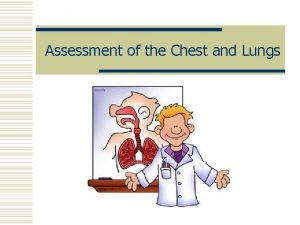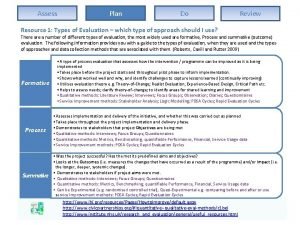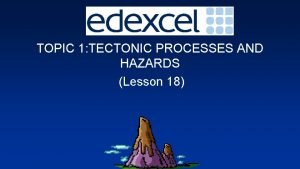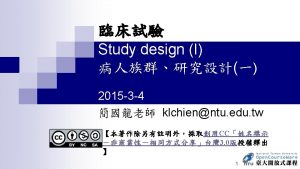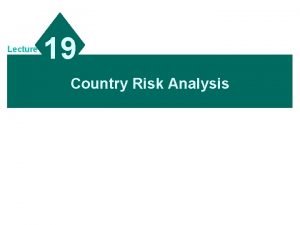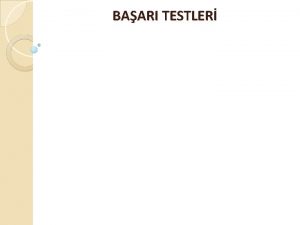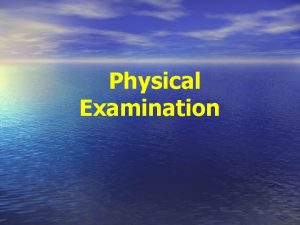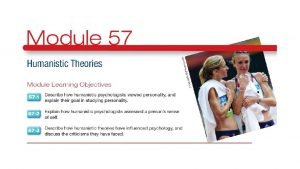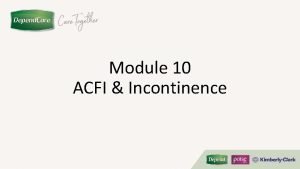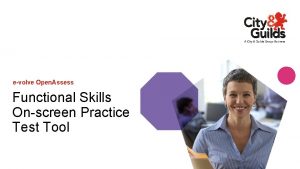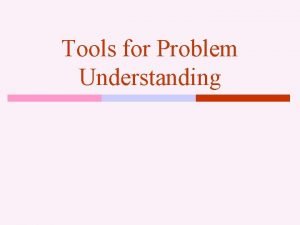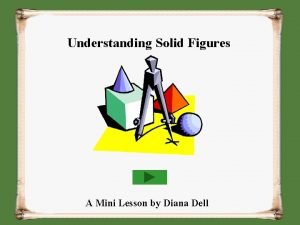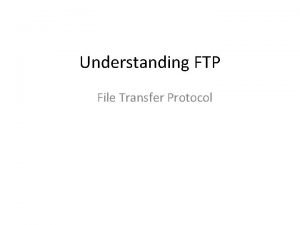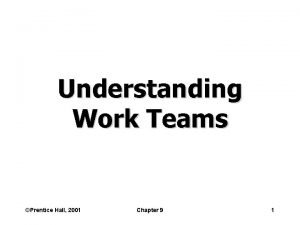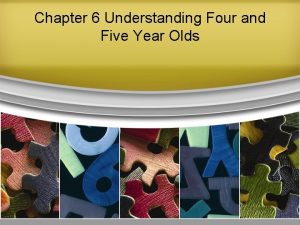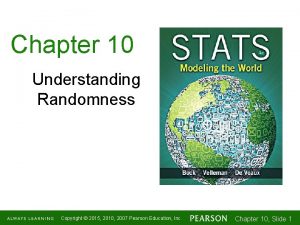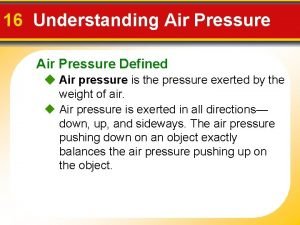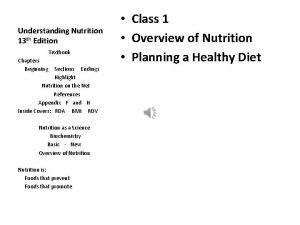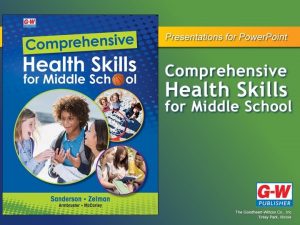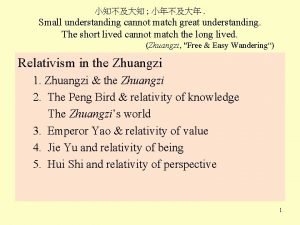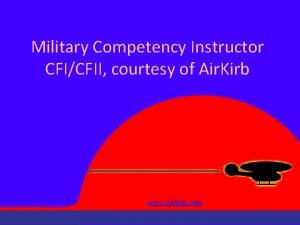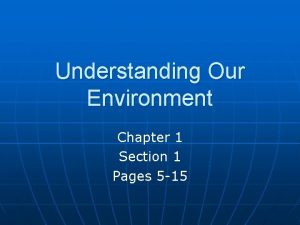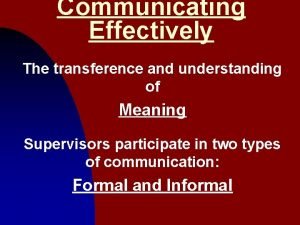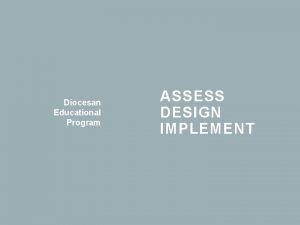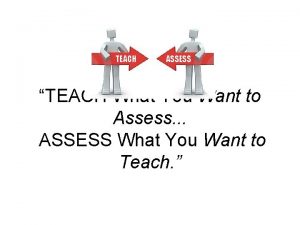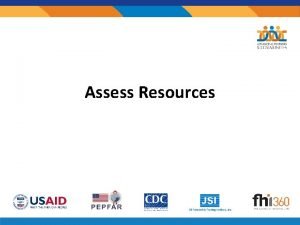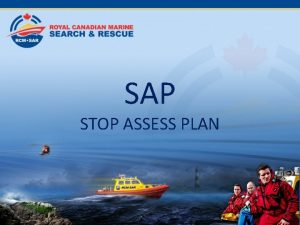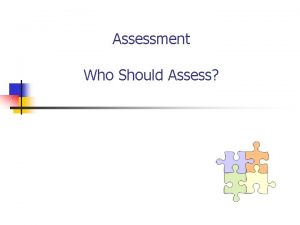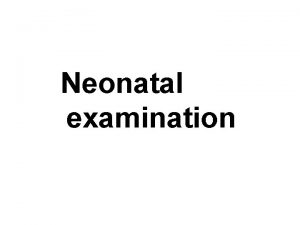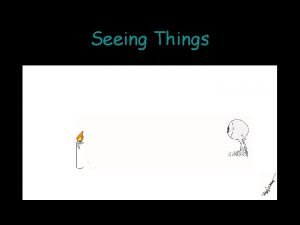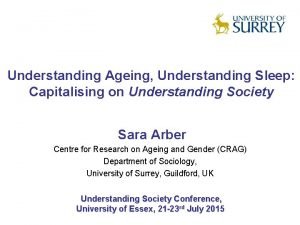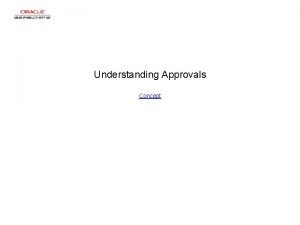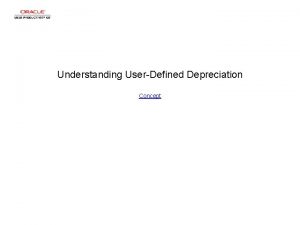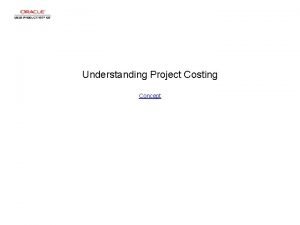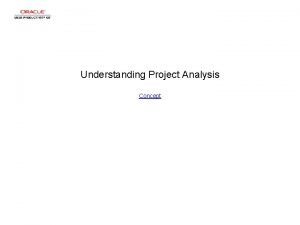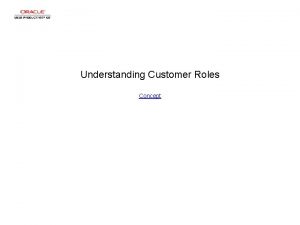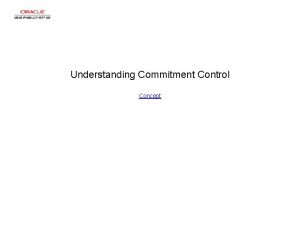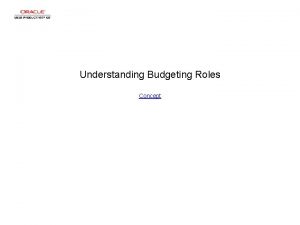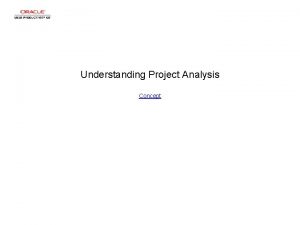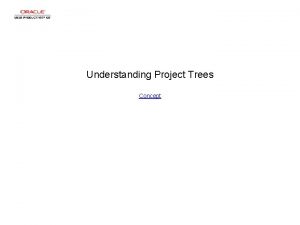LO To assess my understanding of 29 Octtransformations











































- Slides: 43

LO To assess my understanding of 29 -Octtransformations 20 Key Words; Demonstrate, Communicate, Explain

Key Words Transform Reflect Enlarge Rotate Translate Scale Factor Image Object Never heard before? Heard of but not sure what it means? Know what it means and can explain it in context Jot down your ideas here. . .

Level 3 – Symmetry 1. Which of these shapes does not have line symmetry? 2. Which of these shapes has one line of symmetry? Draw it on the shape. 3. Which of these shapes has two lines of symmetry? Draw them on the shape. Shape A Shape B Shape C

Level 3 - Symmetry Can you make 3 different symmetrical shapes by colouring in squares?

Level 3 Question My answer / explanation. My peer’s comment on my explanation. How can you tell if a you have drawn a line of symmetry in the right place?

Level 4 - Reflections Reflect the flag in each of the mirror line shown. Mirror line

Level 4 - Reflections Reflect each shape in the mirror line nearest to the shape. What letter do your reflections make?

Level 4 Question My answer / explanation. My peer’s comment on my explanation. What should you do to check that you have accurately reflected a shape?

Level 5 - Rotations Rotate this shape 90° clockwise from the vertex (corner) marked with a dot.

Level 5 - Enlargements Enlarge these shapes from the centres of enlargements shown. What letter do your enlargements makes?

Level 5 - Translations B A

Level 5 Question My answer / explanation. My peer’s comment on my explanation. What information would you need to give someone in order for them to rotate a shape accurately?

Level 6 - Find the missing lengths The second shape is an enlargement of the first shape. What are the missing lengths? What is the angle marked x? 6 cm ? 4 cm 900 ? cm 4. 5 cm ? 900 3 cm 15 cm 5 cm x 0 5 cm ? ? cm 1200 12 cm

Level 6 - Combining transformations When one transformation is followed by another, the resulting change can often be described by a single transformation. Reflect shape A in the line y = x to give its image. Label the image B. y y=x Then rotate B through 90° about the origin to give its image. Label the image C. A x What single transformation will map shape A onto C?

Level 6 - Rotations Rotate this shape 900 clockwise using the centre of rotation (0, 1)

Level 6 Question My answer / explanation. My peer’s comment on my explanation. Explain fully how you would find the centre of enlargement and the scale factor from the object and its image.

Level 7 - Enlargement

Level 7 Question My answer / explanation. My peer’s comment on my explanation. Explain fully how you worked out the size and position of the enlargement.

Peer Assessment • Swap your assessment task. • You will need a copy of the purple assessment sheet so that you can tick the learning journey as we go through the answers. • Remember to check that the image your peer has drawn is accurate, how can you do this? • If in doubt, ask the teacher.

Level Transformations 3 4 5 6 7 I can reflect a shape in a horizontal or vertical line of symmetry. I can reflect a shape in a oblique (450) mirror line. I can Reflect shapes in oblique (45°) mirror lines where the shape crosses the mirror line. I can recognise when shapes are symmetrical and when they are not. I am beginning to use the distance of vertices from the mirror line to reflect shapes more accurately I can find missing lengths and angles on diagrams that show an object and its image I can match corresponding lengths and angles of object and image shapes following reflection, translation and/or rotation or a combination of these. I can enlarge a simple shape on squared paper by a fractional scale factor, such as ½ or 1/3 and recognise that the ratio of any two corresponding sides is equal to the scale factor. I can reflect shapes not presented on grids, by measuring perpendicular distances to/from the mirror. I can enlarge a shape by positive scale factor from a centre of enlargement and I can find a centre of enlargement and a scale factor. I can rotate shapes, through 90° or 180°, when the centre of rotation is a vertex of the shape, and I can recognise these rotations. I can translate shapes. I can describe fully single transformations and combinations of transformations that will map one shape onto another shape. I can rotate shapes from a centre of rotation when the centre of rotation is not a vertex of the shape. I can recognise these rotations and find the centre of rotation.

My own reflection on my learning in this unit of work. To be a better learner I could………………. . To move my learning on I need to improve my understanding of………………….

Level 3 – Symmetry 1. Which of these shapes does not have line symmetry? Shape C 2. Which of these shapes has one line of symmetry? Draw it on the shape. Shape A 3. Which of these shapes has two lines of symmetry? Draw them on the shape. Shape B Shape A Shape B Shape C

Level 3 - Symmetry Can you make 3 different symmetrical shapes by colouring in squares? Other suggestions There may be other correct answers so put your hand up if you have something different to check.

Level 3 Question How can you tell if a you have drawn a line of symmetry in the right place? My answer / explanation. If the shape is exactly the same each side of the mirror line… If the mirror line cuts the shape in half…… My peer’s comment on my explanation. When writing your comment think about whether or not you understand their explanation and if not what they could have done differently to make it easier to understand.

Level Transformations 3 4 5 6 7 I can reflect a shape in a horizontal or vertical line of symmetry. I can reflect a shape in a oblique (450) mirror line. I can Reflect shapes in oblique (45°) mirror lines where the shape crosses the mirror line. I can find missing lengths and angles on diagrams that show an object and its image I can match corresponding lengths and angles of object and image shapes following reflection, translation and/or rotation or a combination of these. I can enlarge a simple shape on squared paper by a fractional scale factor, such as ½ or 1/3 and recognise that the ratio of any two corresponding sides is equal to the scale factor. I can recognise when shapes are symmetrical and when they are not. √ I am beginning to use the distance of vertices from the mirror line to reflect shapes more accurately I can reflect shapes not presented on grids, by measuring perpendicular distances to/from the mirror. I can enlarge a shape by positive scale factor from a centre of enlargement and I can find a centre of enlargement and a scale factor. I can rotate shapes, through 90° or 180°, when the centre of rotation is a vertex of the shape, and I can recognise these rotations. I can describe fully single transformations and combinations of transformations that will map one shape onto another shape. I can rotate shapes from a centre of rotation when the centre of rotation is not a vertex of the shape. I can recognise these rotations and find the centre of rotation. I can translate shapes. If they have correctly answered the level 3 questions put a tick on the learning journey next to the level 3 description, as shown.

Level 4 - Reflections Check that their images are the correct distance from the mirror lines. . Mirror line

Level 4 - Reflections You get a U shape. Check that it has been drawn in the correct place.

Level 4 Question What should you do to check that you have accurately reflected a shape? My answer / explanation. Check that it is the same distance from the mirror line as the object…. Check that it is facing the opposite way to the object…. Use tracing paper or a mirror ……… My peer’s comment on my explanation. When writing your comment think about whether or not you understand their explanation and if not what they could have done differently to make it easier to understand.

Level Transformations 3 4 5 6 7 I can reflect a shape in a horizontal or vertical line of symmetry. I can reflect a shape in a oblique (450) mirror line. I can Reflect shapes in oblique (45°) mirror lines where the shape crosses the mirror line. I can find missing lengths and angles on diagrams that show an object and its image I can match corresponding lengths and angles of object and image shapes following reflection, translation and/or rotation or a combination of these. I can enlarge a simple shape on squared paper by a fractional scale factor, such as ½ or 1/3 and recognise that the ratio of any two corresponding sides is equal to the scale factor. I can recognise when shapes are symmetrical and when they are not. √ I am beginning to use the distance of vertices from the mirror line to reflect shapes more accurately √ I can reflect shapes not presented on grids, by measuring perpendicular distances to/from the mirror. I can enlarge a shape by positive scale factor from a centre of enlargement and I can find a centre of enlargement and a scale factor. I can rotate shapes, through 90° or 180°, when the centre of rotation is a vertex of the shape, and I can recognise these rotations. I can describe fully single transformations and combinations of transformations that will map one shape onto another shape. I can rotate shapes from a centre of rotation when the centre of rotation is not a vertex of the shape. I can recognise these rotations and find the centre of rotation. I can translate shapes. If they have correctly answered the level 4 questions put a tick on the learning journey next to the level 4 description, as shown.

Level 5 - Rotations

Level 5 - Enlargements You get a H shape. Check that it has been drawn in the correct place.

Level 5 - Translations C B A

Level 5 Question What information would you need to give someone in order for them to rotate a shape accurately? My answer / explanation. You would have to tell them the direction, the degrees and the centre of rotation… My peer’s comment on my explanation. When writing your comment think about whether or not you understand their explanation and if not what they could have done differently to make it easier to understand.

Level Transformations 3 4 5 6 7 I can reflect a shape in a horizontal or vertical line of symmetry. I can reflect a shape in a oblique (450) mirror line. I can Reflect shapes in oblique (45°) mirror lines where the shape crosses the mirror line. I am beginning to use the distance of vertices from the mirror line to reflect shapes more accurately I can reflect shapes not presented on grids, by measuring perpendicular distances to/from the mirror. I can find missing lengths and angles on diagrams that show an object and its image I can match corresponding lengths and angles of object and image shapes following reflection, translation and/or rotation or a combination of these. I can enlarge a simple shape on squared paper by a fractional scale factor, such as ½ or 1/3 and recognise that the ratio of any two corresponding sides is equal to the scale factor. I can recognise when shapes are symmetrical and when they are not. I can enlarge a shape by positive scale factor from a centre of enlargement and I can find a centre of enlargement and a scale factor. √ I can rotate shapes, through 90° or 180°, when the centre of rotation is a vertex of the shape, and I can recognise these rotations. I can translate shapes. I can describe fully single transformations and combinations of transformations that will map one shape onto another shape. I can rotate shapes from a centre of rotation when the centre of rotation is not a vertex of the shape. I can recognise these rotations and find the centre of rotation. √ √ If they have correctly answered the level 5 questions put a tick on the learning journey next to the level 4 descriptions, as shown.

Level 6 - Find the missing lengths The second shape is an enlargement of the first shape. What are the missing lengths? What is the angle marked x? 6 cm 2 cm ? 4 cm 900 9 cm 4. 5 cm ? 900 3 cm 15 cm 5 cm 600 5 cm ? 4 cm 1200 12 cm

Level 6 - Combining transformations When one transformation is followed by another, the resulting change can often be described by a single transformation. Reflect shape A in the line y = x to give its image. Label the image B. y=x y A Then rotate B through 90° about the origin to give its image. Label the image C. C x B What single transformation will map shape A onto C? We can map shape A onto shape C by a reflection in the y-axis.

Level 6 - Rotations

Level 6 Question Explain fully how you would find the centre of enlargement and the scale factor from the object and its image. My answer / explanation. To find the scale factor work out how many times bigger or smaller the length or height of the image is compared to the object. To find the centre of enlargement draw lines connecting each vertex on the image to the corresponding vertex on the object. Where these lines cross is the centre of enlargement. My peer’s comment on my explanation. When writing your comment think about whether or not you understand their explanation and if not what they could have done differently to make it easier to understand.

Level Transformations 3 4 5 6 7 I can reflect a shape in a horizontal or vertical line of symmetry. I can reflect a shape in a oblique (450) mirror line. I can Reflect shapes in oblique (45°) mirror lines where the shape crosses the mirror line. I can recognise when shapes are symmetrical and when they are not. I am beginning to use the distance of vertices from the mirror line to reflect shapes more accurately I can find missing lengths and angles on diagrams that show an object and its image I can match corresponding lengths and angles of object and image shapes following reflection, translation and/or rotation or a combination of these. I can enlarge a simple shape on squared paper by a fractional scale factor, such as ½ or 1/3 and recognise that the ratio of any two corresponding sides is equal to the scale factor. I can reflect shapes not presented on grids, by measuring perpendicular distances to/from the mirror. I can enlarge a shape by positive scale factor from a centre of enlargement and I can find a centre of enlargement and a scale factor. I can rotate shapes, through 90° or 180°, when the centre of rotation is a vertex of the shape, and I can recognise these rotations. √ √ I can describe fully single transformations and combinations of transformations that will map one shape onto another shape. I can rotate shapes from a centre of rotation when the centre of rotation is not a vertex of the shape. I can recognise these rotations and find the centre of rotation. √ I can translate shapes. If they have correctly answered the level 6 questions put a tick on the learning journey next to the level 6 descriptions, as shown.

Vertices of new triangle at (– 1, – 4) (– 4, 2) and (2, 2)

Level 7 Question Explain fully how you worked out the size and position of the enlargement. My answer / explanation. I multiplied the length of each side by 1. 5 to work out the size of the image. I worked out how far away from the centre of enlargement each vertex of the object was and multiplied this by 1. 5 to work out how far away from the centre of enlargement the vertices of the image should be. My peer’s comment on my explanation. When writing your comment think about whether or not you understand their explanation and if not what they could have done differently to make it easier to understand.

Level Transformations 3 4 5 6 7 I can reflect a shape in a horizontal or vertical line of symmetry. I can reflect a shape in a oblique (450) mirror line. I can Reflect shapes in oblique (45°) mirror lines where the shape crosses the mirror line. I can recognise when shapes are symmetrical and when they are not. I am beginning to use the distance of vertices from the mirror line to reflect shapes more accurately I can find missing lengths and angles on diagrams that show an object and its image I can match corresponding lengths and angles of object and image shapes following reflection, translation and/or rotation or a combination of these. I can enlarge a simple shape on squared paper by a fractional scale factor, such as ½ or 1/3 and recognise that the ratio of any two corresponding sides is equal to the scale factor. I can reflect shapes not presented on grids, by measuring perpendicular distances to/from the mirror. I can enlarge a shape by positive scale factor from a centre of enlargement and I can find a centre of enlargement and a scale factor. I can rotate shapes, through 90° or 180°, when the centre of rotation is a vertex of the shape, and I can recognise these rotations. I can describe fully single transformations and combinations of transformations that will map one shape onto another shape. I can rotate shapes from a centre of rotation when the centre of rotation is not a vertex of the shape. I can recognise these rotations and find the centre of rotation. I can translate shapes. If they have correctly answered the level 7 questions put a tick on the learning journey next to the level 6 descriptions, as shown. Return the purple sheet and the assessment task to the pupil whose assessment it is. √

Self Assessment • Collect back your assessment task and the purple sheet. • Have a look at your learning journey. Your peer has ticked the skills that you have demonstrated in this assessment. • Pick an un-ticked skill as your target and write EBI next to it. • Complete the self assessment boxes on the purple sheet.
 Assess your understanding
Assess your understanding Assess your understanding
Assess your understanding Assess plan do review template
Assess plan do review template Sqa solar open access
Sqa solar open access How to assess alert and oriented
How to assess alert and oriented Cranial nerve 10
Cranial nerve 10 Evolve secureassess
Evolve secureassess Retail organization structure
Retail organization structure To assess achievement at the end of instruction is
To assess achievement at the end of instruction is What is tactile fremitus
What is tactile fremitus Assess plan act
Assess plan act Projective test psychology definition
Projective test psychology definition The orm process
The orm process Why assess
Why assess 12 cranial nerve test
12 cranial nerve test Fremitus lungs
Fremitus lungs Assess plan do review model
Assess plan do review model Assess current hr capacity
Assess current hr capacity Tectonic hazard profile
Tectonic hazard profile Blocked random assignment
Blocked random assignment Nutrition focused physical exam training
Nutrition focused physical exam training Techniques to assess country risk
Techniques to assess country risk Standart başarı testleri
Standart başarı testleri Aat secureassess
Aat secureassess Tacticle fremitus
Tacticle fremitus Humanistic psychologists may assess personality by
Humanistic psychologists may assess personality by Acfi assessment pack
Acfi assessment pack Openassess
Openassess How to assess alert and oriented
How to assess alert and oriented Ask assess advise
Ask assess advise Contoh critical incident
Contoh critical incident Prism and pyramid
Prism and pyramid Ftp objectives
Ftp objectives Understanding work teams
Understanding work teams Understanding four and five year olds
Understanding four and five year olds Understanding randomness chapter 10
Understanding randomness chapter 10 Feedback in english examples
Feedback in english examples Understanding air pressure
Understanding air pressure Understanding nutrition 13th edition rental
Understanding nutrition 13th edition rental Understanding your health and wellness
Understanding your health and wellness The great understanding
The great understanding Rote understanding application correlation
Rote understanding application correlation Chapter 1 section 1 understanding our environment answers
Chapter 1 section 1 understanding our environment answers Transference and the understanding of meaning
Transference and the understanding of meaning

